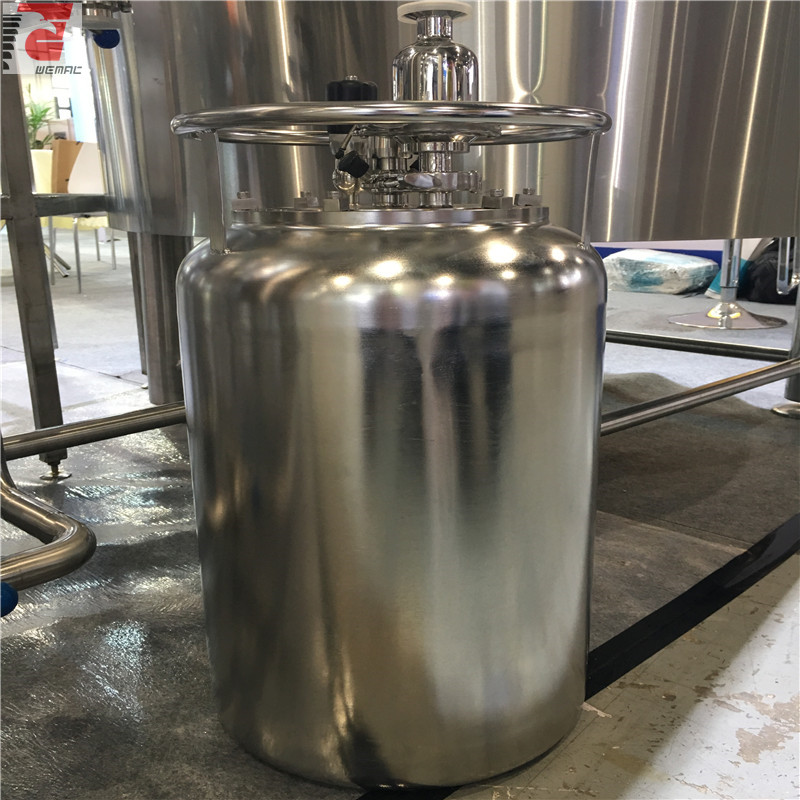Information about How To Propagate Yeast in your garden Don't miss out!
Are you tired of spending money on yeast every time you bake or brew? Propagating yeast is a simple and cost-effective way to ensure that you always have fresh yeast on hand. In this article, we will cover everything you need to know about how to propagate yeast.
The Pain Points of Propagating Yeast
Propagating yeast can seem daunting to beginners. There are many factors to consider, such as the type of yeast you want to propagate, the equipment you will need, and the ideal temperature for growth. Additionally, there is a risk of contamination, which can ruin your entire batch of yeast.
How to Propagate Yeast
The first step in propagating yeast is to choose a strain that you would like to use. You can either use commercial yeast or wild yeast. If using wild yeast, you can either capture it from the air or use fruit, such as grapes or apples, as a starter.
Once you have your yeast strain selected, you will need to create a growth medium for it. The most common medium is a mixture of water and sugar, but you can also use other ingredients, such as flour or hops, depending on the final use of the yeast.
After creating the growth medium, you will need to add the yeast and wait for it to begin growing. The ideal temperature for yeast growth is between 70-75°F (21-24°C). It typically takes anywhere from 24-72 hours for the yeast to reach its full growth potential.
Once the yeast has grown to its full potential, you will need to store it in a container for future use. If you are not using the yeast right away, store it in the refrigerator for up to a week or in the freezer for up to 6 months.
Summary of How to Propagate Yeast
To summarize, propagating yeast involves selecting a strain, creating a growth medium, adding the yeast, waiting for it to grow, and storing it for future use. It is important to keep the yeast at the correct temperature and to avoid contamination during the process.
Personal Experience with How to Propagate Yeast
My first attempt at propagating yeast was a disaster. I used tap water instead of distilled water to make my growth medium, which led to contamination and a batch of unusable yeast. After doing some research, I learned that using distilled water is crucial for avoiding contamination.
Since then, I have successfully propagated yeast many times, and it has saved me a lot of money on buying commercial yeast. I have also experimented with different types of yeast strains and growth mediums to achieve different flavor profiles in my bread and beer.
Tips for Propagating Yeast
Here are some tips to help you successfully propagate yeast:
- Use sterile equipment to avoid contamination
- Use distilled water for the growth medium
- Keep the yeast at the correct temperature for optimal growth
- Experiment with different growth mediums and yeast strains to achieve different flavor profiles
The Ideal Temperature for Yeast Growth
The ideal temperature for yeast growth is between 70-75°F (21-24°C). At temperatures higher than this, the yeast can become stressed and produce off-flavors. Temperatures lower than this can slow down the growth of the yeast. It is important to keep a consistent temperature throughout the propagation process.
Common Issues When Propagating Yeast
One common issue when propagating yeast is contamination. To avoid contamination, use sterile equipment and distilled water for the growth medium. Another issue is using the wrong type of yeast strain for your desired outcome. Make sure to research the characteristics of different yeast strains before propagating them.
Frequently Asked Questions About How to Propagate Yeast
Q: How long does it take to propagate yeast?
A: It typically takes anywhere from 24-72 hours for the yeast to reach its full growth potential.
Q: How do I know if my yeast is contaminated?
A: Contaminated yeast will smell and look abnormal. It may have a sour smell, a strange color, or visible mold or bacteria growth.
Q: Can I propagate yeast from store-bought bread?
A: It is difficult to propagate yeast from store-bought bread, as the yeast is typically dead or inactive by the time it reaches the consumer.
Q: Can I use any type of sugar for the growth medium?
A: While white sugar is the most commonly used sugar for yeast propagation, you can use other types of sugar, such as brown sugar or honey, depending on your desired outcome.
Conclusion of How to Propagate Yeast
Propagating yeast can seem intimidating, but with the right equipment and knowledge, it can be a simple and cost-effective way to ensure that you always have fresh yeast on hand. By following these tips and guidelines, you can successfully propagate yeast and experiment with different yeast strains to achieve unique flavor profiles in your baked goods and brews.
Gallery
How To Make Yeast: Preparing And Propagating Wild Yeast - Utopia

Photo Credit by: bing.com / yeast hefe utopia vermehren propagate propagating ansetzen
Frost Mountain Brew And Wine: Propagate Heady Topper's Conan Yeast (or

Photo Credit by: bing.com / yeast topper heady cans propagate clone brew unfiltered beer frost wine mountain cells two enough goal active bottom found
Beer Yeast Propagation System For Sale Professional Manufacturer WEMAC

Photo Credit by: bing.com / yeast propagation system wemac h023 carlsberg safer cultivation
How To Propagate Yeast (+3 Things You Need) - The Whole Portion

Photo Credit by: bing.com / yeast propagate
Need Help Picking A Yeast? (Strain Comparison Chart) – Escarpment Labs

Photo Credit by: bing.com /

Post a Comment for "Information about How To Propagate Yeast in your garden Don't miss out!"